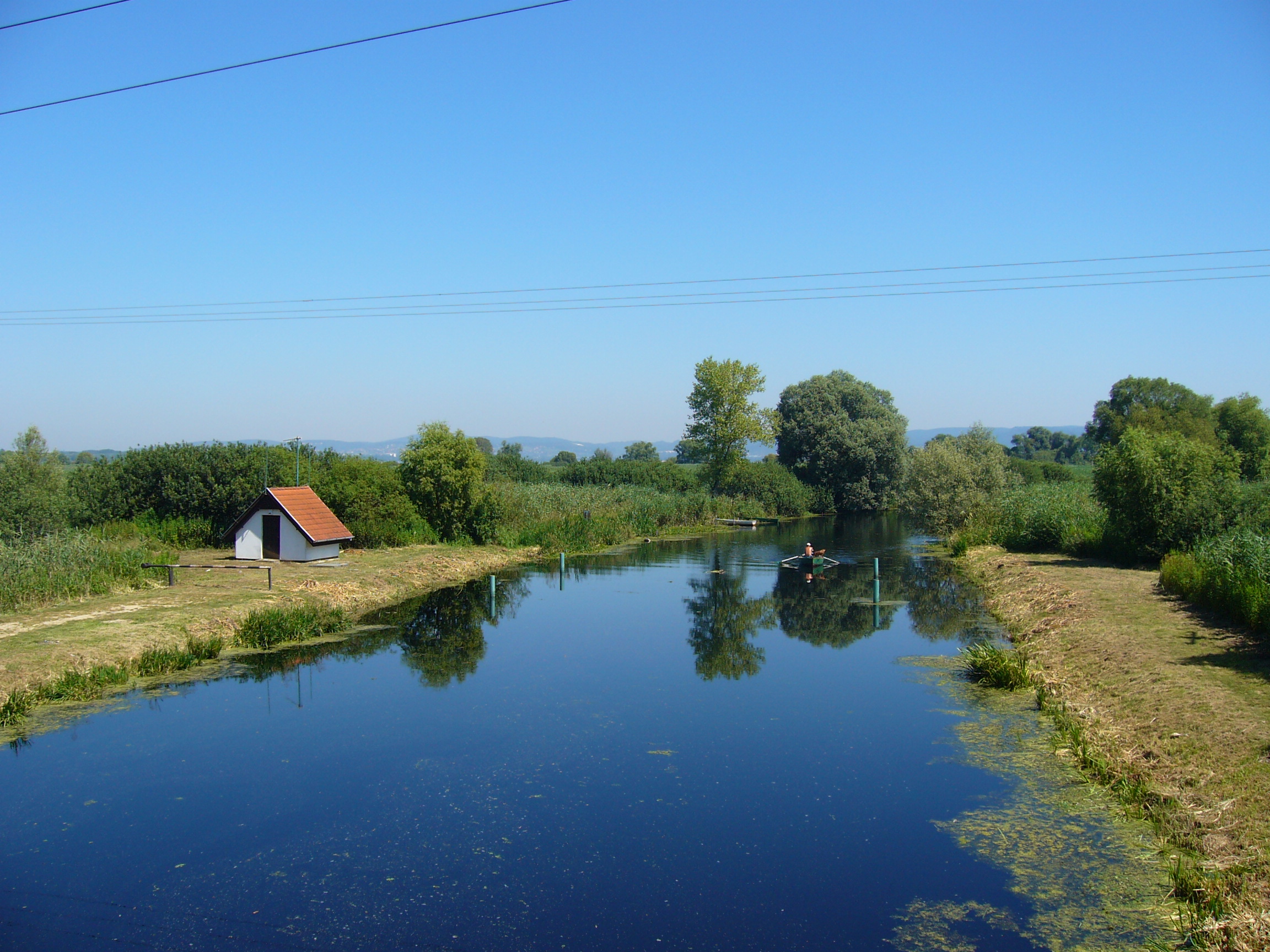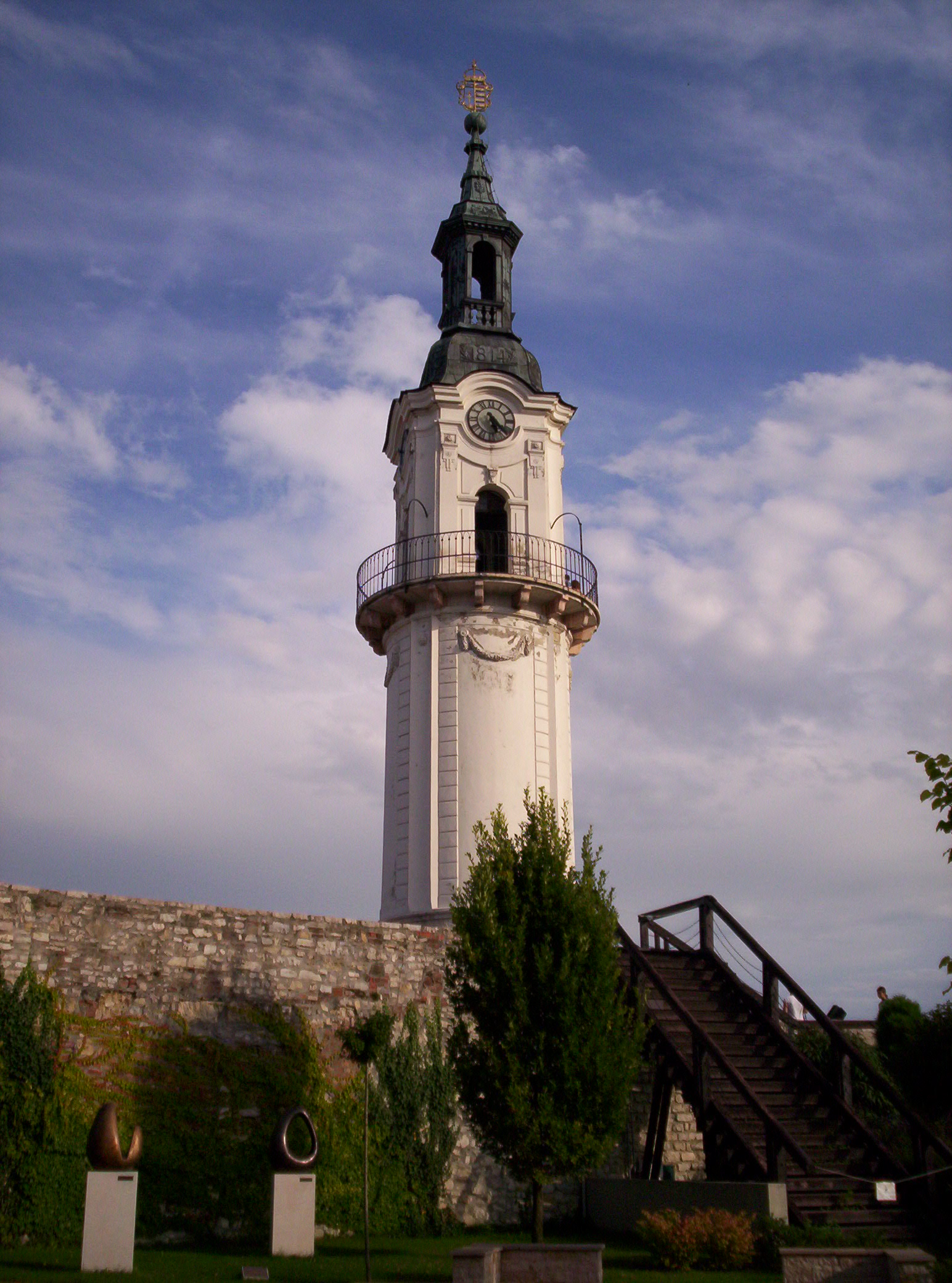|
Zala (county)
Zala ( hu, Zala megye, ; ; ) is an administrative county ( comitatus or ''megye'') in south-western Hungary. It is named after the Zala River. It shares borders with Croatia ( Koprivnica–Križevci and Međimurje Counties) and Slovenia ( Lendava and Moravske Toplice) and the Hungarian counties Vas, Veszprém and Somogy. The capital of Zala county is Zalaegerszeg. Its area is . Lake Balaton lies partly in the county. History In the tenth century, the Hungarian Nyék tribe occupied the region around Lake Balaton. Their occupation was mainly in the areas known today as Zala and Somogy counties. Parts of the western territory of the former county of Zala are now part of Slovenia ( South-Prekmurje) and Croatia ( Međimurje). In 1919 it was part of the unrecognized state of the Republic of Prekmurje, which existed for just six days. Demographics In 2015, it had a population of 277,290 and the population density was . Ethnicity Besides the Hungarian majority, th ... [...More Info...] [...Related Items...] OR: [Wikipedia] [Google] [Baidu] |
Counties Of Hungary
, alt_name = , alt_name1 = , alt_name2 = , alt_name3 = , alt_name4 = , map = , category = Unitary state , territory = Hungary , upper_unit = , start_date = 1950 (Current form, 19 + Budapest) , start_date1 = , start_date2 = , start_date3 = , start_date4 = , legislation_begin = , legislation_begin1 = , legislation_begin2 = , legislation_begin3 = , legislation_begin4 = , legislation_end = , legislation_end1 = , legislation_end2 = , legislation_end3 = , legislation_end4 = , end_date = , end_date1 = , end_date2 = , end_date3 = , end_date4 = , current_number = 19 , number_date = 1950 , type = , type1 = , type2 = , type3 = , type4 = , status = , statu ... [...More Info...] [...Related Items...] OR: [Wikipedia] [Google] [Baidu] |
Zala River
The Zala is a river in south-western Hungary. Its source is in the hills northwest of Szalafő near the borders with Austria and Slovenia. Its length is and drains water from . Several smaller rivers feed into it, including the Felső-Válicka, Szentmihályfalvai patak (brook), Szévíz csatorna (channel), Foglár csatorna on the right bank, and Szentjakabi patak, Sárvíz (Zala) patak, Széplaki patak, Csörgető patak and Nádas patak on the left bank. It flows through the city of Zalaegerszeg before flowing into Lake Balaton near Keszthely. The River Zala flows through the Hungarian counties of Vas and Zala. See also Watermills on Zala River For centuries, the watermills on the Zala river (Zala County, Western Transdanubia, Hungary Hungary ( hu, Magyarország ) is a landlocked country in Central Europe. Spanning of the Pannonian Basin, Carpathian Basin, it is bordered by ... References External links Rivers of Hungary Geography of Vas Count ... [...More Info...] [...Related Items...] OR: [Wikipedia] [Google] [Baidu] |
Republic Of Prekmurje
The Republic of Prekmurje ( hu, Vendvidéki Köztársaság, Mura Köztársaság; sl, Murska Republika, Republika Prekmurje; Prekmurje Slovene: ''Reszpublika Szlovenszka okroglina'', ''Mörszka Reszpublika'') was an unrecognized state in Prekmurje, an area traditionally known in Hungarian as ''Vendvidék '' ("Wendic March"). On June 6, 1919, Prekmurje was incorporated into the newly established Kingdom of Serbs, Croats and Slovenes (renamed "Yugoslavia" in 1929). The state bordered with Austria to the north, Hungary to the east, and the Kingdom of Serbs, Croats and Slovenes to the west and south. Origins Slovenian ethnic territory was once more extensive than today, extending from Friuli in northeast Italy to Lake Balaton in Hungary. The Magyars settled the eastern part of this area in the early 10th century, and Prekmurje (along with Croatia and Slovakia) eventually became part of the Kingdom of Hungary. Thus Slovenes living east of the Mura River developed a separate ide ... [...More Info...] [...Related Items...] OR: [Wikipedia] [Google] [Baidu] |
Prekmurje
Prekmurje (; dialectically: ''Prèkmürsko'' or ''Prèkmüre''; hu, Muravidék) is a geographically, linguistically, culturally and ethnically defined region of Slovenia, settled by Slovenes and a Hungarian minority, lying between the Mur River in Slovenia and the Rába Valley (the watershed of the Rába; sl, Porabje) in the westernmost part of Hungary. It maintains certain specific linguistic, cultural and religious features that differentiate it from other Slovenian traditional regions. It covers an area of and has a population of 78,000 people. Name It is named after the Mur River, which separates it from the rest of Slovenia (a literal translation from Slovene would be ''Over-Mur'' or ''Transmurania''). In Hungarian, the region is known as ''Muravidék'', and in German as ''Übermurgebiet''. The name Prekmurje was introduced in the twentieth century, although it is derived from an older term. Before 1919, the Slovenian-inhabited lands of Vas County in the Kingdom ... [...More Info...] [...Related Items...] OR: [Wikipedia] [Google] [Baidu] |
Zala County Map
Zala or Zaļā may refer to: Places Angola * Zala, Angola, a town and commune in the province of Bengo Ethiopia * Zala (woreda), a woreda (district) in the Gamo Gofa Zone of the Southern Nations, Nationalities, and Peoples' Region * Zala Ubamale, a woreda in the Southern Nations, Nationalities, and Peoples' Region of Ethiopia * Zala, a village in the Degol Woyane ''tabia'' in Tigray Region Hungary * Zala County (former) * Zala County * Zala (river) * Zala (village), Somogy County Latvia * Zaļā Manor, a manor house in Courland * Zaļenieki Manor, also called Zaļā Manor, a manor house near Jelgava Slovenia * Zala, Cerknica, a settlement in the Municipality of Cerknica * Zala, Železniki, a settlement in the Municipality of Železniki Tibet * Zala, Tibet, a village in the Tibet Autonomous Region of China Characters * Athrun Zala, a character of the Cosmic Era timeline of the ''Gundam'' series * Patrick Zala, a character of the Cosmic Era timeline of the ''Gundam'' ser ... [...More Info...] [...Related Items...] OR: [Wikipedia] [Google] [Baidu] |
Lake Balaton
Lake Balaton () is a freshwater lake in the Transdanubian region of Hungary. It is the largest lake in Central Europe, and one of the region's foremost tourist destinations. The Zala River provides the largest inflow of water to the lake, and the canalised Sió is the only outflow. The mountainous region of the northern shore is known both for its historic character and as a major wine region, while the flat southern shore is known for its resort towns. Balatonfüred and Hévíz developed early as resorts for the wealthy, but it was not until the late 19th century when landowners, ruined by '' Phylloxera'' attacking their grape vines, began building summer homes to rent out to the burgeoning middle classes. Name In distinction to all other Hungarian endonyms for lakes, which universally bear the suffix ''-tó'' 'lake', Lake Balaton is referred to in Hungarian with a definite article; that is, ''a Balaton'' 'the Balaton'. It was called ''lacus Pelsodis'' or ''Pelso'' by the Rom ... [...More Info...] [...Related Items...] OR: [Wikipedia] [Google] [Baidu] |
Somogy County
Somogy ( hu, Somogy megye, ; hr, Šomođska županija; sl, Šomodska županija, german: Komitat Schomodei) is an administrative county (comitatus or ''megye'') in present Hungary, and also in the former Kingdom of Hungary. Somogy County lies in south-western Hungary, on the border with Croatia (Koprivnica-Križevci County and Virovitica-Podravina County). It stretches between the river Dráva and the southern shore of Lake Balaton. It shares borders with the Hungarian counties of Zala, Veszprém, Fejér, Tolna, and Baranya. It is the most sparsely populated county in Hungary. The capital of Somogy County is Kaposvár. Its area is 6,036 km2. History Somogy was also the name of a historic administrative county (comitatus) of the Kingdom of Hungary. Its territory, which was slightly larger than that of present Somogy County, is now in south-western Hungary. The capital of the county was and still is Kaposvár. Demographics In 2015, it had a population of 312,084 an ... [...More Info...] [...Related Items...] OR: [Wikipedia] [Google] [Baidu] |
Veszprém (county)
Veszprém (; german: Weißbrunn, sl, Belomost) is one of the oldest urban areas in Hungary, and a city with county rights. It lies approximately north of the Lake Balaton. It is the administrative center of the county (Comitatus (Kingdom of Hungary), comitatus or 'megye') of the same name. Etymology The name of the city originates from a Slavic languages, Slavic personal name ''Bezprem'' or ''Bezprym'' (Proto-Slavic ''Bezprěmъ'') meaning "stubborn", "self-confident, not willing to retreat". ''Besprem'' (before 1002), ''Vezprem'' (1086), ''Bezpremensis'' (1109). The form ''Vezprem'' originates in early medieval scribal habits and frequent exchange of ''B'' and ''V'' under the influence of Greek language, Greek. The city was named either after a chieftain, or the son of Judith of Hungary, who settled here after her husband Boleslaus I of Poland expelled her and her son. Location and legend The city can be reached via the M7 highway and Road 8. It can also be reached from Gy ... [...More Info...] [...Related Items...] OR: [Wikipedia] [Google] [Baidu] |
Municipality Of Moravske Toplice
The Municipality of Moravske Toplice (; sl, Občina Moravske Toplice) is a municipality in Slovenia, part of the Prekmurje region. Its seat is the spa settlement of Moravske Toplice. The municipality is an important center of Lutheranism in Slovenia. Large Lutheran churches are found throughout the municipality. Settlements In addition to the municipal seat of Moravske Toplice, the municipality also includes the following settlements: * Andrejci * Berkovci * Bogojina * Bukovnica * Čikečka Vas * Filovci * Fokovci * Ivanci * Ivanjševci * Ivanovci * Kančevci * Krnci * Lončarovci * Lukačevci * Martjanci * Mlajtinci * Motvarjevci * Noršinci * Pordašinci * Prosenjakovci * Ratkovci * Sebeborci * Selo * Središče * Suhi Vrh * Tešanovci * Vučja Gomila Demographics ;Population by native language, 2002 census : Slovene: 5,617 (91.32%) : Hungarian: 324 (5.26%) :Others and Unknown: 210 (3.42%) :Total: 6,151 The majority ... [...More Info...] [...Related Items...] OR: [Wikipedia] [Google] [Baidu] |
Municipality Of Lendava
The Municipality of Lendava (; sl, Občina Lendava; hu, Lendva község) is a municipality in the traditional region of Prekmurje in northeastern Slovenia. The seat of the municipality is the town of Lendava. Lendava became a municipality in 1994. Settlements In addition to the municipal seat of Lendava, the municipality also includes the following settlements: * Banuta * Benica * Brezovec, Lendava, Brezovec * Čentiba * Dolga Vas, Lendava, Dolga Vas * Dolgovaške Gorice * Dolina pri Lendavi * Dolnji Lakoš * Gaberje, Lendava, Gaberje * Genterovci * Gornji Lakoš * Hotiza * Kamovci * Kapca * Kot, Lendava, Kot * Lendavske Gorice * Mostje, Lendava, Mostje * Petišovci * Pince * Pince–Marof * Radmožanci * Trimlini Demographics The population by native language according to the 2002 census was: *Slovene language, Slovene: 5,516 (49.47%) *Hungarian: 4,390 (39.37%) *Other Europeans and unknown: 1,245 (11.16%) *Total: 11,151 References E ... [...More Info...] [...Related Items...] OR: [Wikipedia] [Google] [Baidu] |
Slovenia
Slovenia ( ; sl, Slovenija ), officially the Republic of Slovenia (Slovene: , abbr.: ''RS''), is a country in Central Europe. It is bordered by Italy to the west, Austria to the north, Hungary to the northeast, Croatia to the southeast, and the Adriatic Sea to the southwest. Slovenia is mostly mountainous and forested, covers , and has a population of 2.1 million (2,108,708 people). Slovenes constitute over 80% of the country's population. Slovene, a South Slavic language, is the official language. Slovenia has a predominantly temperate continental climate, with the exception of the Slovene Littoral and the Julian Alps. A sub-mediterranean climate reaches to the northern extensions of the Dinaric Alps that traverse the country in a northwest–southeast direction. The Julian Alps in the northwest have an alpine climate. Toward the northeastern Pannonian Basin, a continental climate is more pronounced. Ljubljana, the capital and largest city of Slovenia, is geogr ... [...More Info...] [...Related Items...] OR: [Wikipedia] [Google] [Baidu] |





.jpg)

